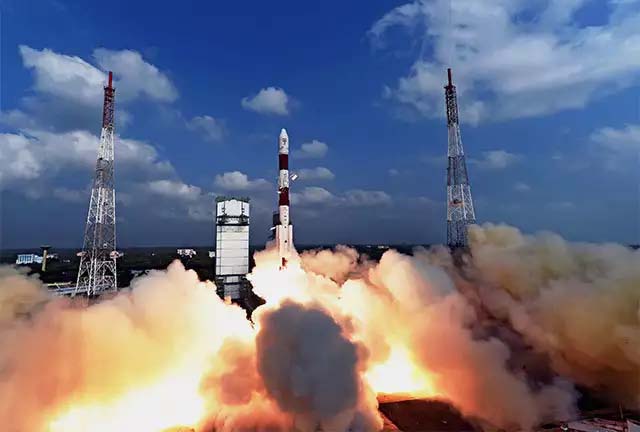
New Delhi: If in the first 50 years of its journey, ISRO focussed on tapping space technology for societal benefits through satellite-based missions, with the Chandrayaan-3, ISRO has signalled strongly that in the coming decades, it’s going to emerge a formidable player in the satellite-launch market and inter-planetary missions.
The successful landing of Chandrayaan-3 on the moon on August 23 is a ‘big step’ for India’s space odyssey and could well be a ‘giant leap’ for the future of planetary and space sciences. By safely guiding the Vikram lander onto the ‘dark’ side of the south pole of the lunar surface and releasing Pragyan, the rover, the Indian Space Research Organisation (ISRO) has broken into a totally new orbit — the exclusive club of the most advanced space nations, as it moves into its seventh decade of operations.
In the history-making flight, ISRO ensured that India cornered the glory of becoming the first nation to land closest to the south pole. It is the fourth country after the space giants to land on the moon, after the US, Russia and China.
In its sights are the mission to the Sun, Aditya L1; the probe to Venus; the second mission of the Mars orbiter mission (Mangalyaan-2); manned space mission (Gaganyaan); reusable launch vehicle (RLV); and a small satellite launch vehicle (SSLV). It is also planning a host of global partnerships, with the US for the Artemis Project and the NISAR (NASA-ISRO Synthetic Aperture Radar); with France in meteorology, and Japan’s JAXA.
Now, the space agency, whose success mantra is “frugal innovation, cost effective and high performing technology capability, strong industry collaboration”, will focus on mega projects. It will be ably complemented by Indian industry and start-ups, which have got a big boost with the government introducing reforms and incentives through a new Space Policy of 2021.
Today, ISRO, headquartered in Bengaluru and with institutes spread across the country, has a modest budget of approximately $1.6 billion (Rs 13,700 crore). It has highly motivated scientists, mostly drawn from national engineering colleges and a rising leadership role for women scientists. The infrastructure is growing with a second launch pad getting ready in Sriharikota for use by the private sector.
ISRO has launched 431 satellites for 34 countries as of end July 2023. The story began with the launch of Aryabhatta on April 19, 1975, with the help of the Soviet Union. It has not always been an easy ride, though. Failures have been the stepping stones to success for the untiring and motivated ISRO scientists. Right from Aryabhatta to SLV-3 and from GSLV to the latest Chandrayaan-3, the agency has faced many setbacks. But every time, it has bounced back. The best combination being the success of Chandrayaan-3, which is powered by the heaviest GSLV MK3 launcher.
In the launch vehicle segment, the future belongs to reusable rockets. They will make launching very cost effective and give a competitive advantage. Already, SpaceX of Elon Musk has forged far ahead in this. ISRO has made promising progress in the last seven years in the development and launching its own RLV. All the existing ISRO vehicles are expendable and the changeover to RLV will be a game changer for it.
ISRO, along with Airports Authority of India, jointly developed GAGAN (GPS Aided Geo Augmented Navigation) system for air traffic control. It is a system of satellites and ground stations that provide GPS signal corrections, giving the best positional accuracy. ISRO also developed Navigation with Indian Constellation (NavIC), an independent regional navigation satellite system to provide accurate position information service to users in India as well as the region extending up to 1,500 kms from its borders.
With such a strong foundation, motivated staff, impressive achievements, increasing private sector participation and support from the government, ISRO can be a global superpower to reckon with in space technology.















